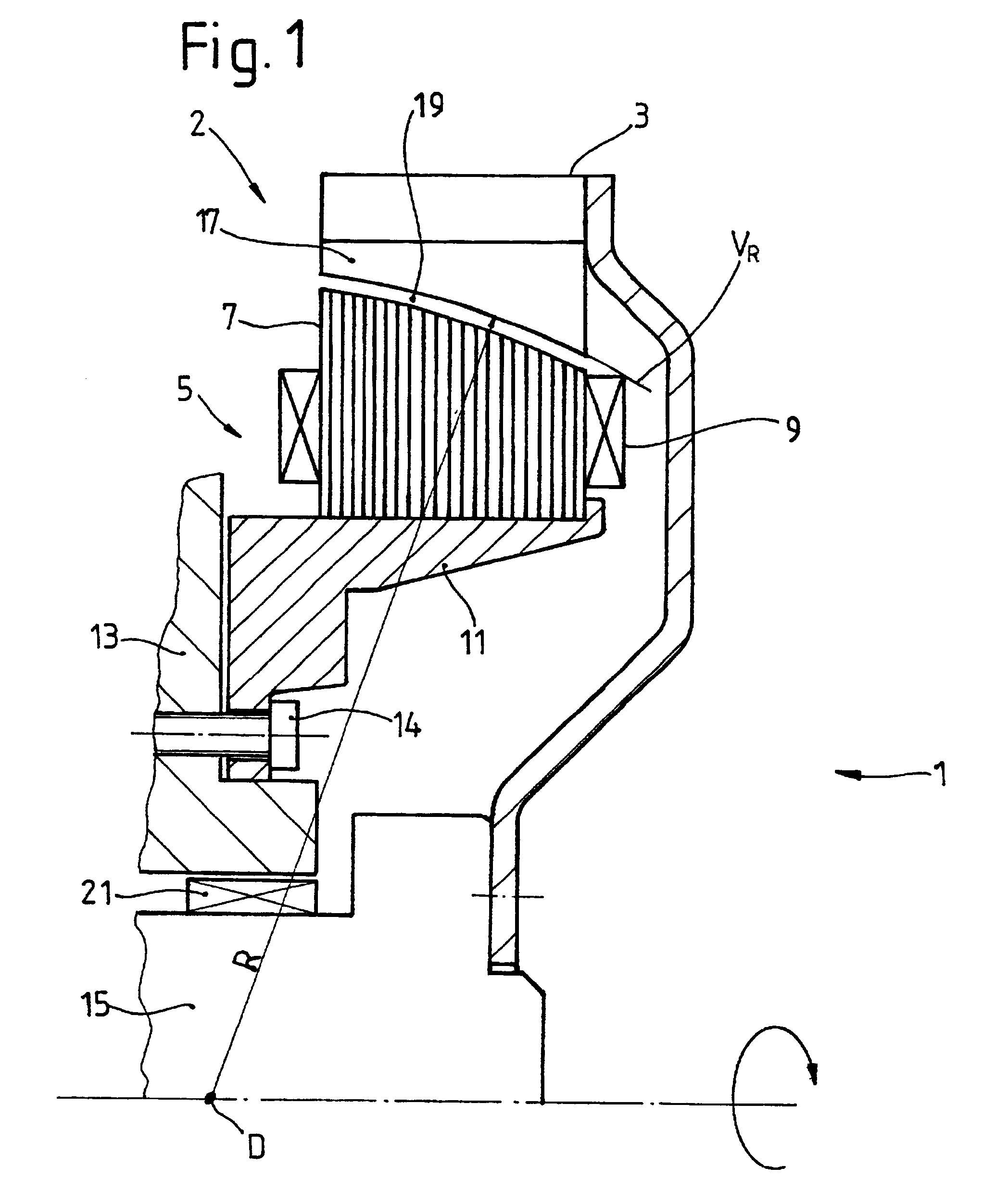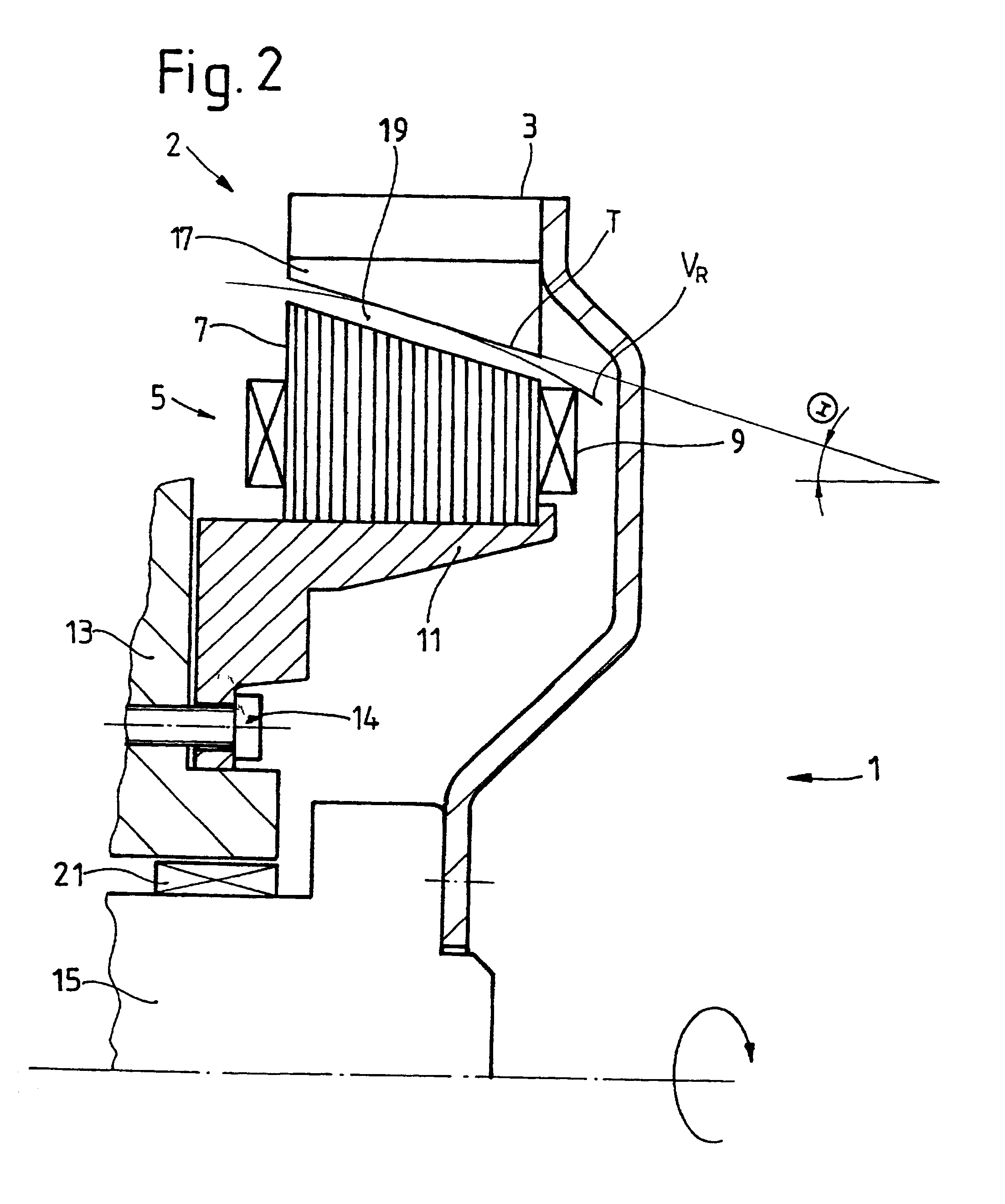Drive unit with an electric machine
- Summary
- Abstract
- Description
- Claims
- Application Information
AI Technical Summary
Benefits of technology
Problems solved by technology
Method used
Image
Examples
Embodiment Construction
FIG. 1 is a schematic, sectional diagram of an electric machine 2 with a rotor 3 and a stator 5, which machine serves as part of a drive unit 1. The stator 5 consists of a stack of plates 7 with coils 9 mounted on it. The stack of plates is mounted on a stator flange 11, which, on the housing side, is attached by fastening means 14 to the housing 13 of an internal combustion engine serving as the drive element. It is also possible, however, for the stack of plates to be attached to a power takeoff element such as a transmission or a torque converter. The rotor 3 of the electric machine 2 surrounds the stator 5 radially on the outside and is connected to a drive shaft 15 of the internal combustion engine for rotation in common. The rotor 3 has permanent magnets 17 arranged around the circumference, which are opposite the coils 9. The intermediate space forms an air gap 19, extending in the radial direction, with a height which is constant within the scope of manufacturing and assembl...
PUM
 Login to View More
Login to View More Abstract
Description
Claims
Application Information
 Login to View More
Login to View More - R&D
- Intellectual Property
- Life Sciences
- Materials
- Tech Scout
- Unparalleled Data Quality
- Higher Quality Content
- 60% Fewer Hallucinations
Browse by: Latest US Patents, China's latest patents, Technical Efficacy Thesaurus, Application Domain, Technology Topic, Popular Technical Reports.
© 2025 PatSnap. All rights reserved.Legal|Privacy policy|Modern Slavery Act Transparency Statement|Sitemap|About US| Contact US: help@patsnap.com



